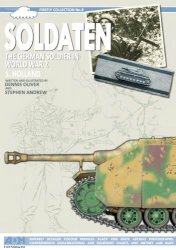ARIANAAFGHAN AIRLINES COMPANY, LTD.: Afghan Authority Building, P. O. Box 76, Ansari Watt, Kabul, Afghanistan; Phone 93 25 541; Fax 93 21 015; Code FG; Year Founded 1955. The Royal Afghan Government (51%) and the Indamer Company of India (49%), founded postwar by American Peter Baldwin, form Aryana Afghan Airlines, Ltd. on January 27, 1955. The Indamer Company provides four Douglas DC-3s, which begin domestic operations from a Kabul base during the summer, making a three-hour flight to Mazar-e Sharif via Kunduz. They also begin the company’s long tradition of transporting Muslim pilgrims on Hadj to Mecca.
On June 27, 1956, the government signs an Air Transport Development Project Agreement with the U. S. for the development of the nation’s commercial air system.
To implement the 1956 pact with the U. S., the carrier is reincorporated in 1957; the Afghan government again takes 51% controlling interest, but Pan American World Airways (1), under State Department prodding, acquires Indamer’s 49% holding for $200,000. The spelling of the previous name Aryana (the ancient Greek name for Afghanistan) is now changed.
On June 1, the American carrier is awarded a $2.05-million management and technical assistance contract financed by the International Cooperation Administration; Pan Am agrees to run the airline, training its personnel and expanding its operations. Incidentally, the CIA now intercedes with the American CAB to award Pan Am a certificate for Kabul. Two days later, a wet-leased DC-4 with an Afghan crew departs New York (IDL) for Kandahar; from that point, it will fly Hadj pilgrim flights to Mecca for the remainder of the summer.
With ICA funding, the U. S. FAA sends a Civil Aviation Assistance Group to Afghanistan in 1958 to design and oversee the building of a modern airway and airport plan at key communities in the country. Meanwhile, PAWA-1 trainers and Afghan crews, flying DC-3s, inaugurate regional services from Kabul to Delhi via Amritsar, and to Karachi.
In 1959 the U. S. Export-Import Bank lends Ariana the funds with which to purchase two Douglas DC-4s; under Pan American World Airways (1) tutelage, on September 11 these commence international services of Kandahar to Frankfurt via Tehran, Beirut, Ankara, and Prague. The weekly return flights are thus operated over what is marked as The Marco Polo Route.
Flight 202, one of the new DC-4s, with 5 crew and 22 passengers, fails its takeoff from Beirut for a scheduled flight to Tehran on November 21 and makes a forced landing (24 dead).
With U. S. Export-Import Bank funding for three years, beginning in 1960, a DC-6Bs and several more DC-3s are acquired in May, with the four-engine propliner coming from Pan American World Airway (1)’s Latin American fleet; these are employed as DC-4 replacements. A new route is launched to London (LGW). On June 10, again at the State Department’s request, Pan Am accepts a $4.6-million foreign aid contract to train personnel for Ariana.
Lack of traffic causes frequencies on The Marco Polo Route to be reduced to twice monthly in the spring of 1961 and, in August, service to Karachi is withdrawn altogether. Meanwhile, as a result of the new equipment’s introduction, Kabul-New Delhi traffic increases dramatically.
When Pakistan closes its border to Afghanistan in September 1962, Ariana is called upon to inaugurate an emergency airlift to India, taking in raisins and pomegranates to trade for tea. Three of the carrier’s four DC-3s and its only DC-6 are committed to this “Fruit Lift.”
Everett Wood arrives from Pan Am’s internal German service at the end of 1962 to become Ariana’s chief pilot, with Jack Race as his assistant. While training local flyers, the two Americans help the company maintain domestic services from Kabul to Kandahar, Herat, Kunduz, and Mazar-e Sharif and international frequencies to Tehran, Delhi, and Beirut.
To date, the American major has received $412,000 in fees in addition to the income from its original contract. Enplanements during the latter year exceed 25,000.
The operational headquarters are moved to Kabul from Kandahar in 1963. Piloted by Capt. Vincento Serapio, a DC-3, on “Fruit Lift” duty, makes a forced landing in the Logar valley southeast of Kabul on March 9. The aircraft is wrecked during an attempt to fly it out 24 days later.
On April 1, the U. S. AID loans the government of Afghanistan $2,625,000 at.75% for 40 years; the government, in turn, is required to pass on the money to the airline at 3.5% for 10 years. When this is accomplished, Ariana orders another DC-6A and two Convair CV-240s. The Douglas and both Convairliners arrive in September. Enplanements this year total 31,500.
A CV-440, purchased from Allegheny Airlines, joins the fleet in March 1964, replacing two DC-3s and inaugurating services to Kunduz and Herat; Kabul to Peshawar and Karachi flights start during the summer. Meanwhile, government shareholding in the company is redistributed between the Monopoly Department (16%), the Civil Aviation Department (15%), Da Afghanistan Bank (10%), and miscellaneous (10%). A slump in domestic air traffic occurs during the fourth quarter, due largely to the opening of paved highways over some major routes within Afghanistan.
Still, overall passenger boardings grow 10% to 35,000; the workforce stands at 571 and revenues of $2.9 million are earned.
The ICA contract with Pan Am for assistance expires in July 1965 and is replaced by a much reduced two-year deal. Kabul to Tashkent DC-6 service is started and passenger pooling agreements are signed with Pakistan International Airlines Corporations (PIA), Indian Airlines Corporation, Iran Air, and Aeroflot Soviet Airlines. In cooperation with the latter, DC-6B service to Tashkent begins in July. On August 13, the DC-6B resumes the full Marco Polo Route, flying from Kabul and Kandahar to London via Beirut and Frankfurt.
The workforce is increased to 607 and a total of 44,704 passengers are carried on the year. The fleet in 1966 comprises 1 CV-440,2 DC-6A/Bs, and 2 DC-3s; an order is placed for 1 Boeing 727-113C.
The Pan American World Airways (1) management contract is concluded in 1967. Although Capt. Wood and his American flying colleagues will depart, a new maintenance and technical contract is signed. Bakhtar Afghan Airlines is formed to begin taking over Arian’s domestic services with DC-3s, and later, de Havilland Canada DHC-6s. Capt. Inam Al-Haq Gran succeeds Woods as chief pilot in December.
The carrier’s first jetliner, the B-727-113C ordered in 1966, is delivered on March 23, 1968 and is placed on the international routes, allowing expansion of the London service, now rerouted via Tehran, Istanbul, and Frankfurt. The employee population is 757. Enplanements total 59,254 and revenues of $5.5 million are generated.
On final approach to London (LGW) on a service from Frankfurt on January 5, 1969, Flight 701, a B-727-113C with 8 crew and 57 passengers, crashes into a tree and a house near the runway; 50 people aboard the aircraft are killed along with 1 person on the ground.
The lease of a replacement “three-holer” is arranged with World Airways.
A DC-3 and a DC-6 are both damaged beyond repair in a ground collision at Kabul on January 15; there are no fatalities.
A total of 46,212 travelers are flown as traffic drops dramatically.
Employment grows 2% in 1970 to 652. A new B-720B is delivered in January 25. Five other aircraft are still in the company fleet: 2 DC-3s, 2 DC-6A/Bs, and 1 CV-440. Passenger boardings rise 3.4% to 47,838 and freight traffic increases 17.9%.
On January 1, 1971, Ariana transfers its last domestic routes and responsibilities to Bakhtar Afghan Airlines. The arrival of a second B-727-113C, purchased from Executive Jet Aviation in June allows retirement of the propeller equipment and the inauguration of new services to Paris and Amsterdam. Boeing 727-113C routes are extended in 1972 to Istanbul, Lahore, and Amritsar.
The last Pan American World Airways (1) technician departs in 1973; however, a second B-720B, purchased from Juan Trippe’s carrier, joins the fleet in May. European frequencies are increased as a consequence. In June, three Yakovlev Yak-40s are purchased from the Soviet Union and are assigned to Bakhtar Afghan Airlines, Ltd. The carrier also participates in the UN-sponsored refugee exchange between Bangladesh and Pakistan, carrying some 48,000 persons. The workforce is now 783. Traffic and revenue figures are not revealed as the last emir surrenders his throne in a military coup.
Service is inaugurated in 1974 to Peking, Tokyo, Baghdad, Dacca, and Kathmandu. The political atmosphere begins to change as certain factions in the new republic seek closer relations with the Soviet Union. Enplanements in 1975 are 79,900. The employee population in 1976 is 772. Passenger boardings increase a slight 1% to 80,707, while freight grows a more substantial 22%. A Douglas DC-10-30 is ordered.
After 12 years of service as the carrier’s chief pilot, Capt. Gran is murdered near his Kabul home in 1977. A total of 100,292 passengers are carried this year. As the result of political unrest in 1978, bookings dip 5.2% to 95,607 and cargo falls 10.6%.
Airline employment at Chairman F. A. Khaleqyar’s carrier totals 809. The first wide-body, a DC-10-30, joins the fleet on September 21,1979. Political unrest continues and Soviet forces invade the nation on December 24. During the Christmas onslaught, the DC-10-30 is hit by a rocket and reduced to junk, which must later be sold. A puppet regime loyal to Moscow is established at Kabul on December 27. Except for Aeroflot Soviet Airlines and Indian Airlines Corporation, all foreign air carriers suspend flights into Kabul.
Service is suspended in 1980 to Amsterdam, Frankfurt, London, Paris, Istanbul, and Rome. A route is added to East Berlin (Schoenfeld Airport) in 1981; the remaining B-720B is withdrawn. Soviet airliners begin to replace the American units during 1982-1983. Enplanements for the two years are, respectively, 66,000 and 80,000.
During 1984-1986 , the route system is dramatically reduced; international services are extended only to Amritsar, New Delhi, Tashkent, East Berlin, Prague, and Moscow. Foreign flights primarily transport injured Soviet and government personnel. Traffic figures are not available. Having remained grounded for most of its life, the DC-10-30 is sold to British Caledonian Airways, Ltd. (BCAL) in 1985.
On October 23, 1985, Ariana is merged with the domestic carrier Bakhtar Afghan Airlines, Ltd., which now becomes the national airline. Service to Amritsar and East Berlin is suspended. Enplanements total 183,677.
Airline employment grows 15.7% in 1987 to 1,307 and the fleet now includes 1 each B-727-113C and B-747-155C, 2 Tu-154Ms, 2 An-24s, 4 An-26s, and 2 Yak 40s, with orders outstanding for 2 more Yak 40s. Firing U. S.-made surface-to-air missiles on June 11, Afghan guerrillas down an An-26 with 55 aboard (53 dead). Still, new frequencies are added to Prague, Moscow, and Tashkent.
Despite the conflict, passenger boardings jump 18.9% to 226,482; however, freight is down by 19% to 8.15 million FTKs.
The impending withdrawal of the Soviet forces helps the company’s international traffic to significantly increase in 1988. In February, the company is renamed Ariana Afghan Airlines.
Citing security reasons, Indian Airlines Corporation suspends its twice-weekly roundtrips between New Delhi and Kabul in December. Its presence in the Afghan capital is, however, retained through the chartering of a weekly B-727-113C services from Ariana.
An An-26 is destroyed on December 10, with the loss of all 25 passengers; there are no other details concerning the accident.
Customer bookings balloon 25% to 78,801 and cargo recovers, up 20% to 10.55 million FTKs.
Evacuation of Russian troops is completed by February 15, 1989, and anti-Soviet forces take over the capital and the government on April 28.
Terrorists attempt to takeover an An-26 with 4 crew and 35 passengers en route from Kabul on June 18, shooting the copilot. When the rear ramp door is opened in-flight to facilitate the pirates’ escape, a forced landing must be made onto a hill at Zabol, Iran (6 dead).
Passenger boardings inch upward by 1% to 79,302 while freight at the 1,584-employee flag line swells 31% to 13.86 million FTKs.
1990 is also a good year, at least through the first 11 months for which records are released.
Customer bookings increase 18% to 84,889. Cargo declines 19% to 10.15 million FTKs. Now those Islamic factions that had driven out the Soviets turn on each other and wage civil war.
The fleet in 1991 includes 2 each Antonov An-24s, An-26s, Yakovlev Yak-40s, and Tu-154Ms, and 1 each Boeing 727-113C and B-727-155C. Ariana, which now flies to Delhi, Dubai, Prague, Moscow and Teheran, begins discussions with French aviation officials concerning the possibility of a regular Paris-Kabul flight.
Passenger boardings decline 1% to 92,276 and freight falls 26% to 8.2 million FTKs.
Ariana’s weekly charter flights between Kabul and New Delhi cease on March 13, 1992, when Indian Airlines Corporation resumes thrice-weekly services to the Afghan capital.
On May 29, a Tu-154M and both Yak-40s are destroyed in a rebel rocket attack on Kabul Airport; the wreckage will be written off on August 1. Service between Kabul and Peshawar, Pakistan, is resumed on June 1; air links had been severed in 1979 after the Soviet invasion.
On August 6, Air France sells the company three used 727-228As at $4 million each as replacements and a number of Afghan pilots are sent for training in France. The first B-727-228A is scheduled to arrive in Kabul on August 25.
The first Boeing trijet actually is delivered to the Afghan capital on October 18. The welcoming ceremony is spoiled when a cow, tethered for sacrifice, breaks free and makes a run for freedom; it is killed by an airport security guard’s Kalishnikov. Enplanements for the year total just 45,000.
Information on the period 1993-1995 is based on Associated Press correspondent Ian Stewart’s October 30, 1995 story, “Through Bullets and Hijackings, Afghan Airline Keeps Flying.” In 1993, President Abdullah Samadi’s carrier employs 1,584 workers. An alleged threat by mujahedeen rebels under Gulbuddin Hekmatyar to shoot down any aircraft attempting to take off or land at Kabul on January 10 causes the cancellation of all civil air traffic from the airport, including Ariana flights to Delhi, Amritsar, Dubai, and Tashkent. Service is resumed three days later.
In addition to domestic routes, the airline continues its services to Amritsar, Delhi, Dubai, Moscow, Prague, and Tashkent. Traffic statistics are reported through October and show that passenger boardings are off 31% to 29,000 and freight is down 24% to 4.05 million FTKs.
In the years that follow, Ariana literally soldiers on, attempting to provide a civil airline service where no civil aviation system exists, operating to airports and hangars ringed by surface-to-air missiles that guard against attack by forces opposed to President Burhanuddin Rabbani.
Tickets for the remaining routes are sold on an ad hoc basis and passengers arriving at terminals find none of the amenities normally expected—even the arrival and departure boards are in disrepair. The Bank of Afghanistan, Ariana itself, and the government continue to foot the bill for airline operations, while President Rohullah Aman attempts to keep aircraft repaired and essential schedules honored.
The anti-Rabbani council led by Prime Minister Gulbuddin Hekmat-yar and northern warlord Gen. Abdul Rashid Dostum continue to claim that Ariana is being used for military purposes. The group claims to have hard evidence that the airline is using military airports and transporting counterfeit money, ammunition, and military personnel from Moscow and New Delhi.
On September 1, 1994, the council threatens to shoot down the carrier’s planes beginning on September 3; Ariana officials again deny the company’s involvement in politics and state that it is flying as a public transport concern and is not carrying arms but such necessities as medicines.
The company’s route network continuously shrinks in 1995. The provincial capitals of Mazar-e Sharif, Kandahar, and Herat all fall to enemies of the Kabul government and, as the result of a diplomatic break between Rabbani’s government and Pakistan, services to Peshawar are terminated.
While on approach to Jalalabad after a September 11 service from Kabul, an An-26 with 6 crew and 40 passengers runs out of fuel and makes a forced landing (3 dead).
Taliban tribesmen hijack a B-727-228A, en route to Dubai with an allfreight cargo and no passengers, to Kandahar on September 21.
By the end of the month, the airline is down to seven operable aircraft, maintenance is questionable, and one domestic route remains, Kabul to Jalalabad. By October, the company does not even have sufficient electricity to power its ground equipment or radios.
In October 1996, Pakistan provides the company with a temporary maintenance and operational base at Karachi Airport. On December 7, 1 B-727-228A, 2 Yak-40s, and 2 An-24RVs are allowed to begin scheduled twice-weekly services to the provincial capitals of Herat, Jalalabad, and Kandahar. In addition, weekly roundtrips are launched from Kabul or Jalalabad to Amritsar and Dubai.
The fleet of Acting President F. M. Fedawai at the beginning of 1997 includes 2 B-727-228As, 2 An-24RVs, 2 An-26s, 1 Tu-154M, 2 Yak-40s, and 1 DHC-6-300 Twin Otter. A workforce of 1,584 is in place and helps the company resume many of the services suspended earlier.
As part of the civil war between the government and Taliban forces, troops of the latter, on September 9, take over the airport at Mazar-e Sharif, 5 mi. E of the city, capturing several company aircraft.
A Yak-40 crashes while landing at Jalalabad on October 29 (one dead).
A total of 39,839 passengers are flown this year, together with 20.9 million freight FTKs.
En route from Kandahar to Herat on January 13, 1998, an An-26, with 6 crew and 45 passengers, encounters bad weather that prevents its arrival. The plane turns back and makes an unsuccessful attempt to land at the former Soviet air base at Shindand and then tries to make it back to Kandahar. Unable to do so, it next turns toward Quetta, capital of Pakistan’s Baluchistan province but, probably out of fuel, it crashes 70 miles N. of that city. There are no survivors.
On March 19, one of the company’s two remaining B-727-228As, with 45 passengers, crashes 300 ft. below the summit of 3,000-ft. high
Sharki Baratayi Mountain while on descent to Kabul from Kandahar; there are no survivors. This is the 16th Ariana plane to crash since the airline was founded and the 9th with fatalities.
Service is maintained throughout the remainder of the year. Customer bookings total 53,000 and 9.9 million FTKs are operated.
In July 1999, the Taliban-led government of Afghanistan admits that it is harboring Osama bin Laden, the Saudi-born alleged terrorist sought by the U. S. for the 1998 bombing of its embassies in Nairobi and Dar es Salaam. As a result, on August 10, the American government blocks all of the airline’s assets (roughly $500,000) within U. S. jurisdiction as part of a sanctions program designed to punish the Kabul regime.
Reuters, Ltd. reports on August 31 that the Indian government, without explanation, has requested that Ariana suspend its flights in and out of the northern Punjabi state of Amritsar.
To punish the Taliban Islamic movement for its failure to turn over Saudi dissident Osama bin Laden, wanted in connection with the death of 200 people in the destruction of two U. S. African embassies on August 7, the UN, on November 14, institutes sanctions against the government of Afghanistan.
Banned are Ariana’s twice-weekly passenger and thrice-weekly cargo roundtrips to Kandahar, Dubai, and Sharjah, the weekly service from Kabul to Jeddah, and three weekly flights to India. Still, 30-35 weekly domestic services are maintained.
Using spare parts scavenged from wrecked aircraft at Kabul Airport, company mechanics are able to keep aloft a fleet of 5 Antonovs and 2 B-727-228As.
A total of 140,000 passengers are flown on the year and 7.39 million FTKs are operated.
With permission from the UN, the company signs an aircraft, crew, management, and insurance (ACMI) contract with Air Gulf Falcon on February 4, 2000. Under its terms, the Jumbojets of the Sharjah-based ACMI specialist will transport 12,000 Afghan Hadj pilgrims in 90 flights (3 a day) to and from Mecca in 2 phases between February 9 and April 23.
While on a February 6 domestic service from Kabul to Mazar-e Sharif, a B-727-228A with 128 passengers is taken over by armed gunmen, who order the jetliner to land at Uzbekistan, Kazakhstan, and Moscow. Passengers are released at each point, including 10 at both Kazakhstan and Moscow.
On February 8, the aircraft is flown to London (STN) where negotiations begin. A crew member is injured after being thrown from the plane the next day following the escape of the pilot and three other cabin crew. The skyjack ends early on February 10 with the arrest of 19 people and the release of all hostages, 60 of whom ask for political asylum in a scene leading to charges that the entire event has been staged.
Wearing Ariana colors, the first Air Gulf Falcon transport delivers 127 Muslim pilgrims from Kandahar to Saudi Arabia on the morning of February 22.
Promising to impose tighter security, President Mullah Hamidullah Akhund is able to obtain the return of his Boeing, which lands at Mazar-e Sharif’s airport on March 2.
On August 14, the UN Security Council grants Ariana special permission to fly a group of 135 sick children to Germany on August 16; treatment has been organized by the German charity Peace Village.
Fearful of losing their licenses, company pilots and flight engineers make a public appeal on August 27 that the UN sanctions against Afghanistan be lifted
ARIES DEL SUR, S. A.: Chacabuco 90, Piso 7, Capital Federal, Buenos Aires, 1035, Argentina; Phone 54 (1) 477-1078; Fax 54 (1) 334-7367; Year Founded 1997. This domestic operator is established at Buenos Aires in 1997 to provide ad hoc all-cargo services. Pedro Racini is named general manager and he undertakes services employing a Douglas DC-10-30CF.
ARISTA INTERNATIONAL AIRLINES: United States (19791984) . The New York-based travel agency Tourlite International elects to form its own inclusive-tour and charter airline, Tourlite International Airlines, at John F. Kennedy International Airport in December 1979. The tour operator seeks operating authority from the CAB, which is received in July 1980. Recession and the PATCO air traffic controllers’ strike (with subsequent ATC restrictions) prevent start-up in 1981.
Early in 1982, the company name is changed and the new Arista leases a pair of Douglas DC-8-62s from SAS (Scandinavian Airlines System). The inaugural flight is finally made on April 4, from New York to Athens. A total of 45,000 passengers are flown during the remainder of the year. Although revenues of $14.3 million are generated, expenses are $16.7 million. As a result, a $2.36-million operating loss is suffered.
Holiday, vacation, and other tour flights are initiated in 1983 to Rio de Janeiro, Manchester, London (LGW), Paris, Munich, Rome, and Tel Aviv. Customer bookings reach 132,000, but Arista loses $1.22 million.
The carrier stops flying in 1984 and the two jets are returned to Stockholm.
ARIZONA AIR SEDONA: United States (1993-1994). Skywest Airlines subsidiary Aviation Services West purchases and renames the previously independent small regional Air Sedona in March 1993. President Jack Seeley’s company continues its operations from its Sedona, Arizona, base with 1 Cessna 172, 1 Cessna 182, and 1 Cessna 207. Services cease in 1994.




 World History
World History









